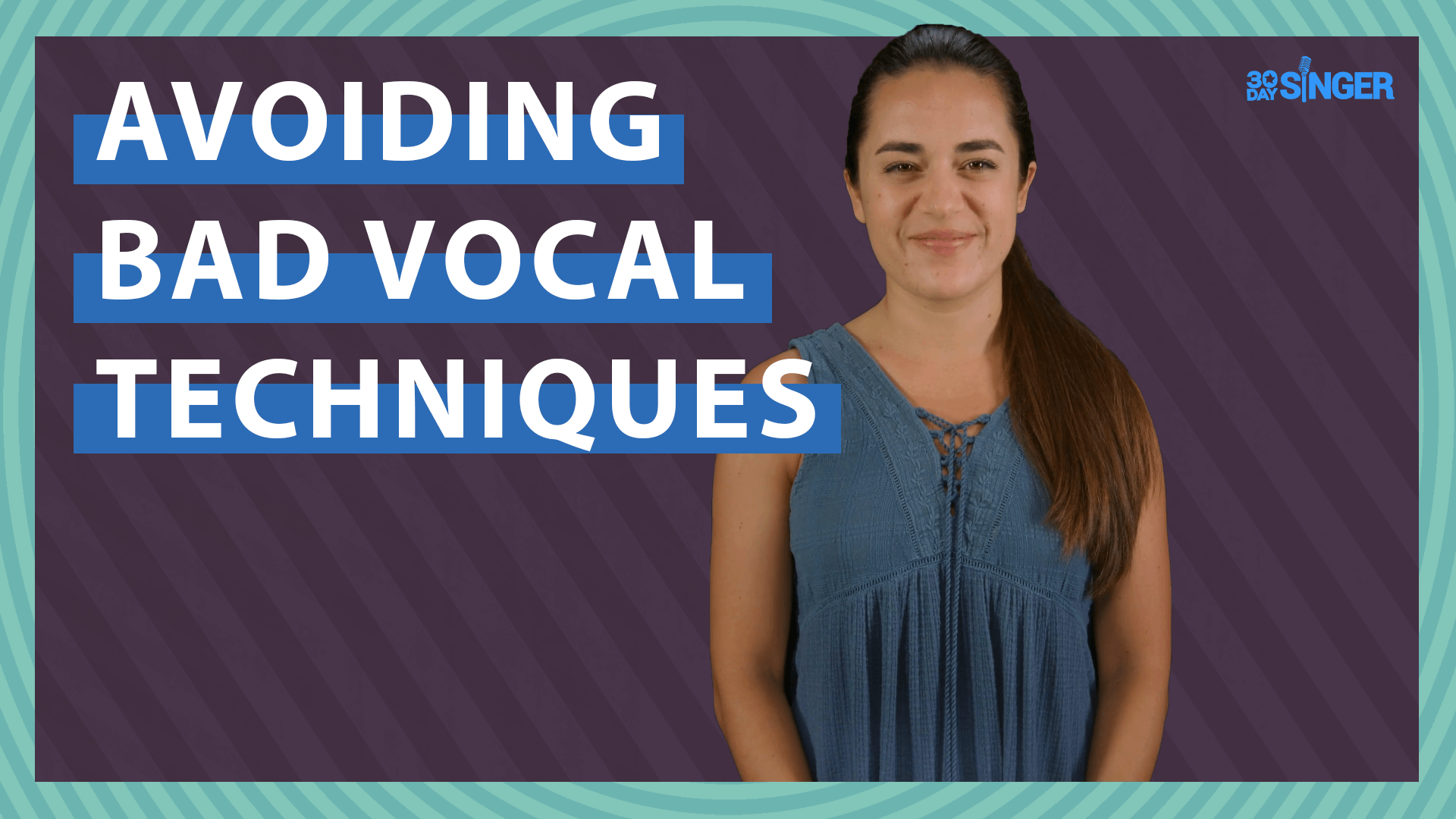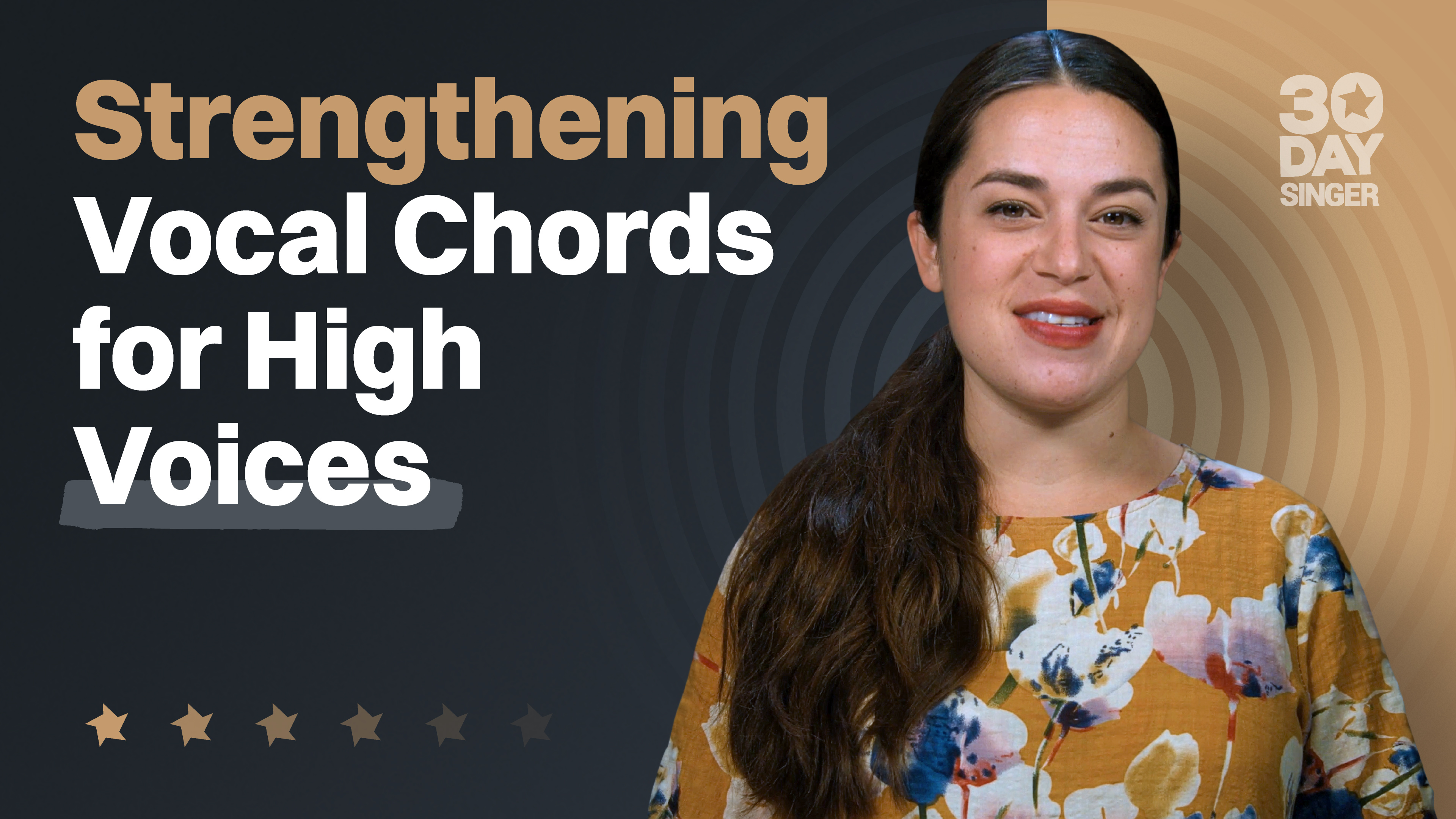Vocal Technique
Welcome to the Vocal Technique section of 30 Day Singer. These lessons focus on developing key singing techniques like vibrato, belting, singing higher or lower, breath control and much more. We offer guidance on how to learn these techniques and perfect them so you can perform with confidence. Some of these techniques are introduced in our beginner courses so if you need more time and focus on a particular area, these lessons come in very handy. You can bounce between these lessons freely or use a set combination of these lessons as part of your daily practice routine to monitor progress.
TUTORIALS
Removing Vocal Strain
By Camille van NiekerkDo you ever feel pain or discomfort when you sing? If so, please check out my tutorial on removing vocal strain! You’ll learn some tools and exercises to rid yourself of excess tension so that you can feel and sound your best.
Key to Improving Riffs and Runs
By Camille van NiekerkThis lesson series focuses on improving your riffs and runs by enhancing clarity, speed, and style. Through exercises and examples, you'll learn how to achieve clearer pitch distinctions, increase speed while maintaining precision, and add stylistic elements like dynamics, inflection, and embellishment. The goal is to help you refine your vocal agility and expressiveness to make your riffs more polished and impactful.
Healthy and Strong Belting
By Camille van NiekerkBelting! It’s high. It’s loud. It’s impressive. And it’s on nearly every singer’s list to master. If you sing pop, rock, musical theater, or country music, this tutorial is for you!
Avoiding Bad Vocal Technique
By Camille van NiekerkWe talk a lot about good vocal techniques. But what would be considered bad techniques? And how do we avoid them? Watch this tutorial to learn about the three most common bad techniques, and how to avoid them in your singing.
Getting Better Tone
By Camille van NiekerkWhile we all have a general sound that comes naturally to us, we can develop and explore different tone qualities within our voice. In this tutorial, Camille shows you different tones, with tips on how to achieve consistent tonal quality throughout your range.
Stronger Head Voice
By Camille van NiekerkThis lesson series is designed to help you develop a stronger head voice—a goal for many singers! Head voice or falsetto is naturally lighter than chest voice and often underutilized in daily speech, making it weak and breathy. Using “Amazing Grace” as our example song, you’ll learn exercises and techniques to strengthen your head voice.
Mastering Vibrato
By Camille van NiekerkVibrato adds life and expression to singing. Camille is ready to show you how to develop your vibrato naturally in this tutorial.
Practice Better Breathing
By Abram PoliakoffIn this lesson, we’ll focus on developing better breath control for singing. Through a series of targeted exercises, you will learn how to optimize inhalation and exhalation, sustain longer phrases, and improve your overall vocal performance. The exercises and demonstrations include breath control techniques, breath conditioning, and a final breath control test to push your limits. We’ll also apply these techniques to a folk song, "The Water is Wide," to practice breath management in a musical context.
Strengthening Vocal Chords For High Voices
By Camille van NiekerkAlthough we don’t strengthen our vocal cords in exactly the same manner that we strengthen our biceps or quadriceps, there are plenty of exercises we can use to strengthen their coordination.
Building Stronger Falsetto
By Abram PoliakoffIn this lesson series, Abram will guide you through the essential techniques for building a stronger falsetto, an often underdeveloped but crucial vocal range for male and lower-voiced singers. You’ll learn how to achieve proper cord compression, expand your falsetto range, and develop a fuller, richer sound through targeted exercises. By the end, you’ll have the tools to confidently sing in falsetto without straining, improving your overall vocal flexibility and health. Whether you're new to falsetto or looking to strengthen this register, this course will help you master it step by step.
Frequently Asked Questions
Some great vocal warmups for singers start with gentle humming or lip trills to relax and engage your vocal cords without straining them. Then, work through some scales to gradually increase your pitch range and get your voice fully warmed up.
For a quick 5 minutes vocal warm up, try some lip trills or gentle humming for a couple of minutes. It’s effective and quickly preps your vocal cords for singing or speaking without overdoing it.
When your voice is sick, keep singing warmups light and gentle—like humming or low, quiet scales. Also, drink lots of warm fluids and rest your voice as much as possible.
Start with some light humming, followed by a few pitch glides (from low to high sounds) to get your voice comfortable. Finish with a few tongue and lip trills to help with articulation.
Two good vocal warm ups are humming and lip trills. These are super effective and easy vocal warm-ups that gently activate your vocal cords without causing strain. Both are great for starting any vocal exercise.
Breathing exercises and resonance drills, like humming and vocal slides, improve the quality and projection of your speaking voice. They help develop control and clarity, making your voice sound more confident.
Hydrate regularly, practice breathing exercises, and do daily warm-ups. Consistency with these habits will help your voice sound smoother and stronger over time.
To strengthen a weak speaking voice, practice deep breathing and speak from your diaphragm to add power. Also, try projection exercises like speaking in front of a mirror to boost confidence and clarity.
Focus on articulation exercises, like tongue twisters, and practice controlling your breath to avoid running out mid-sentence. Over time, these will improve clarity and help you speak with ease.
The four vocal function exercises are sustained phonation (holding a sound steadily), pitch glides (sliding between notes), lip trills, and staccato sounds on different pitches. They work together to strengthen and balance your vocal cords.












